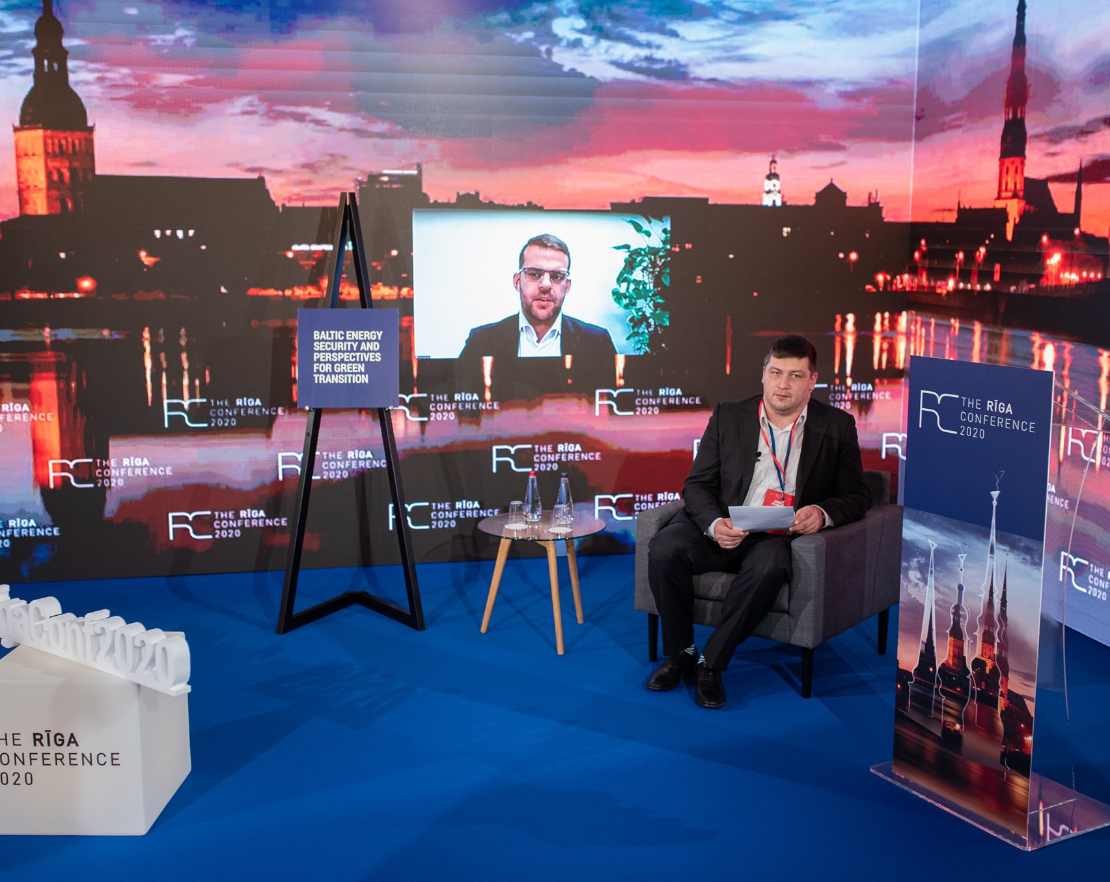Panel Participants:
Uldis Mucinieks, Sales Director of Latvenergo AS
Jānis Karlsbergs, Under Secretary of State – Policy Director at the Ministry of Defence of the Republic of Latvia
Andris Piebalgs, Former European Commissioner for Energy
Riku Huttunen, Director General of the Energy Department at the Ministry of Economic Affairs and Employment in Finland
Marija Zjurikova, Deputy Head of the Department of Energy Market and Infrastructure, Ministry of Economics of the Republic of Latvia
Viljar Veebel, Researcher of the Department of Political and Strategic Studies at the Baltic Defence College
Moderator:
Gunārs Valdmanis, Managing Director of the Latvian Association of Power Engineers and Energy Constructors
The discussion was begun with a short overview of the core responsibility of the energy sector – security of supply. In the past few years, access to sources and markets has increased significantly, but important work remains to be done. The Baltics must synchronize with the European electricity system, and a common gas network must be established across them. This will need political discussions, which have been difficult before. The discussion was then veered towards green transitioning – which is still slow, but on an upwards trend. The prompt was set that the pace for green transitioning is likely to depend on how quickly it can be fit into market rules, as currently renewables cannot yet exist in the market without their support, as they are not yet efficient and cheap enough.
Discussion moved to gas, which remains a central security issue in the north. A discussant highlighted that there is visible price convergence for gas, meaning that gas interconnectivity is providing the intended effect. Since early 2020, Finland, Estonia, and Latvia have had a common gas market. Currently common entry-exit tariffs consist of two balancing zones: Latvia – Estonia and Finland. The challenge is that the hub is not liquid. As for physical energy flows, they have become a diversified two-way street in the region among the Nordics, Poland, and other players. The discussant continued to highlight that networks for Co2, and hydrogen are becoming more interconnected, the risks are decreasing – but electricity remains a weakness with increased security risks. The Baltics need much more collaboration to ensure electricity security.
Another discussant continued by pointing out that the Baltics and Finland are currently exemplary models of regional cooperation for European Union members. So far, the synchronization project’s second phased has received almost EUR 720 million in funding, with the maximum amount of European Union co-financing. Though the Baltics are synchronous with Russian system, synchronization with European networks should be done by 2025, which is a concrete expression of European security and solidarity.
The discussion was then shifted to how carbon neutrality and climate neutrality is also becoming a bigger priority. The Nordic system is far in climate neutrality – Finland is 80% based on clean fossil fuel electricity. In five to ten years, offshore wind projects could take place among individual countries but shared among them in the Baltics. A climate neutral future requires strengthening networks, however and the regional market has lots to do, like strengthening network, stations, storage, etc. Though Latvia is using more decentralizing solar powers, there is a lot more work that remains to be done. The process is likely to be slow, as the states cannot afford to ruin energy companies which have – perhaps unwisely – been invested into more than a decade ago. This remains a core dilemma for ministries of energy around the European Union.
Though there was consensus that important steps have been taken and initiatives have been set in motion, discussants highlighted that there are more facets to the energy issue. Especially in the north, there is a need for secure, clean, but also affordable energy. The EU is increasing requirements for energy consumption limits and their impact on the climate, but the north will always have more costs due to a different climate, which requires different and necessarily more expensive technologies. The discussant argues that due to the central heating in the Baltics, the region is stable – but not affordable. As the Baltics are importing, not exporting, it will continue to pressure the regional GDP.
To answer these concerns, the discussants turned towards the wider issues of European and security policy. Energy infrastructure is becoming more complex, with increasing participation from the European Union. In that sense, the Union has created the energy market. Now the infrastructure must be used wisely. The general flow should flow from high to low price, but the intra-day market only does this little bit. European rules aim for the use of 70% of cross-zonal electricity capacity use, and this requires cybersecurity and cyber-readiness. These will require broader decisions tied to digitalization, which involves more systems that need to be interconnected among member states. A discussant noted that this may not result in a decrease for energy prices for consumers, especially in the energy sector. Much of the costs are not just in the raw resource, but in the costs of maintaining infrastructure and labor.
To reconcile the slow change in prices with the need for energy security, countries should ensure they have resilient infrastructure that are not wholly dependent on one source of energy. Similarly, military forces may need a separate and cheaper market of energy to ensure their capacity.
The panel concluded by emphasizing that while the European Union is on a constructive and certain path towards increasing the security of supply and green transformation – it is important that the energy market becomes more active for consumers to see benefit from it. It is also likely, that governments will have to make investments into renewable energy which may not help consumers in the short term.

